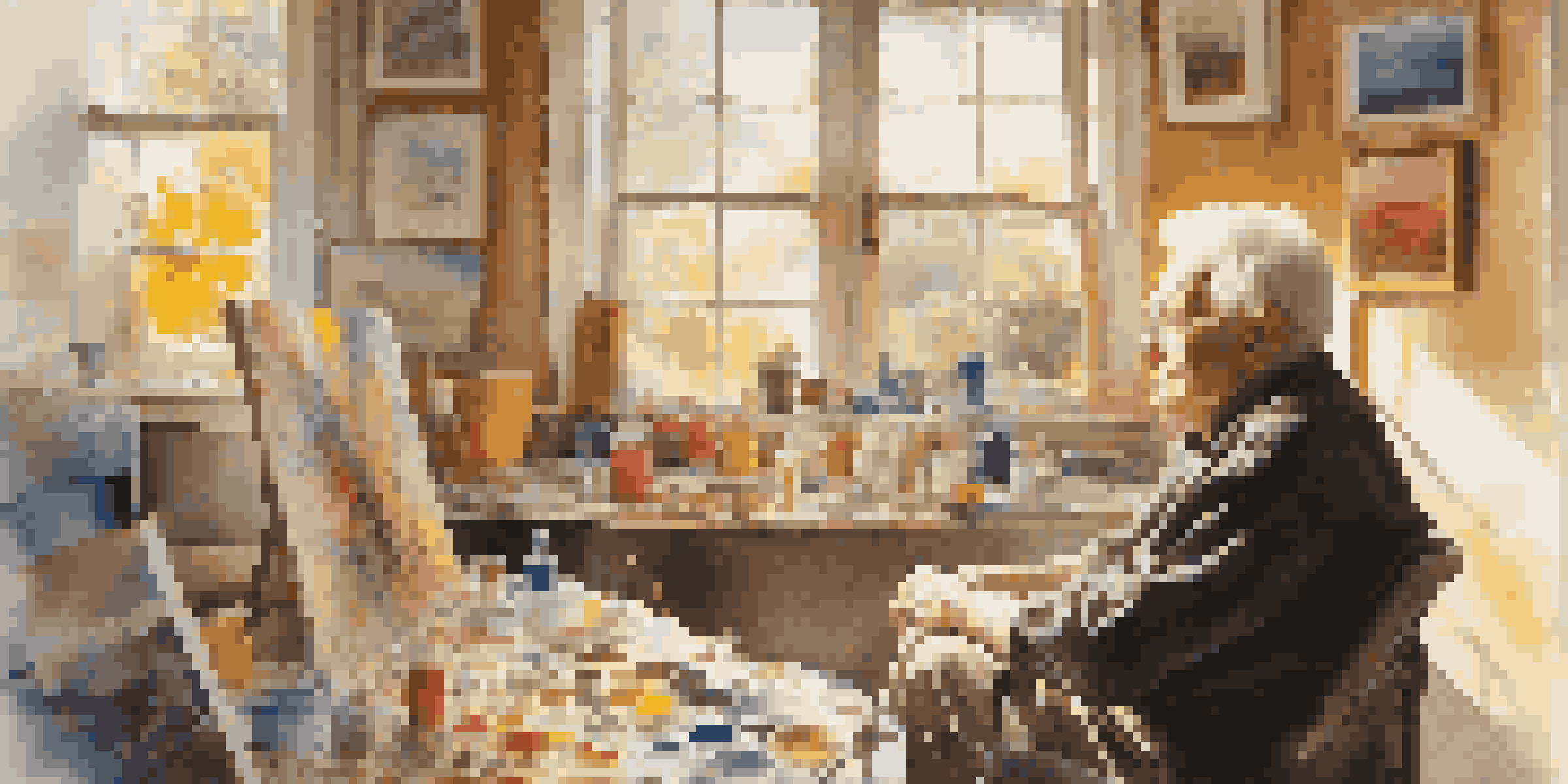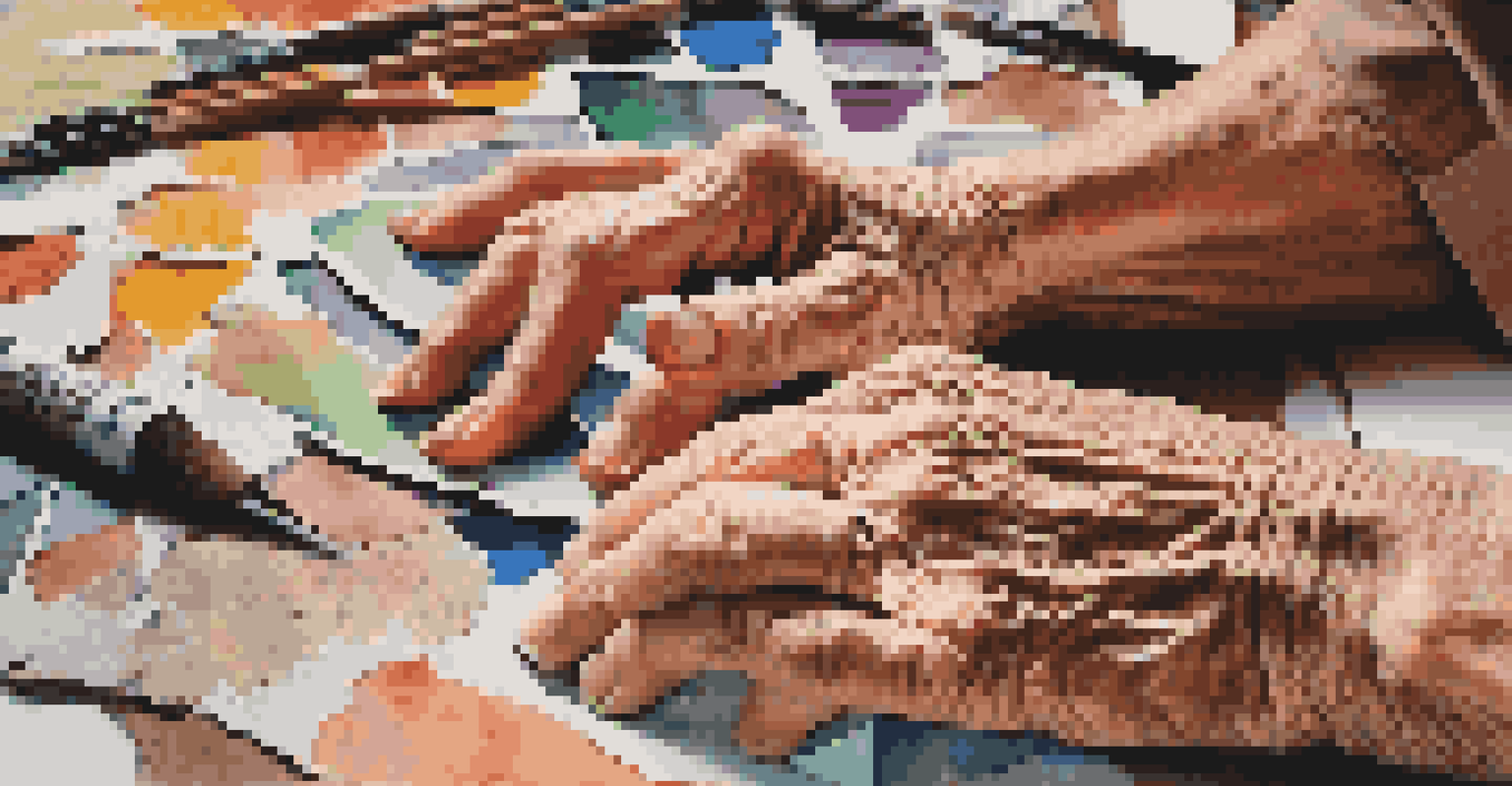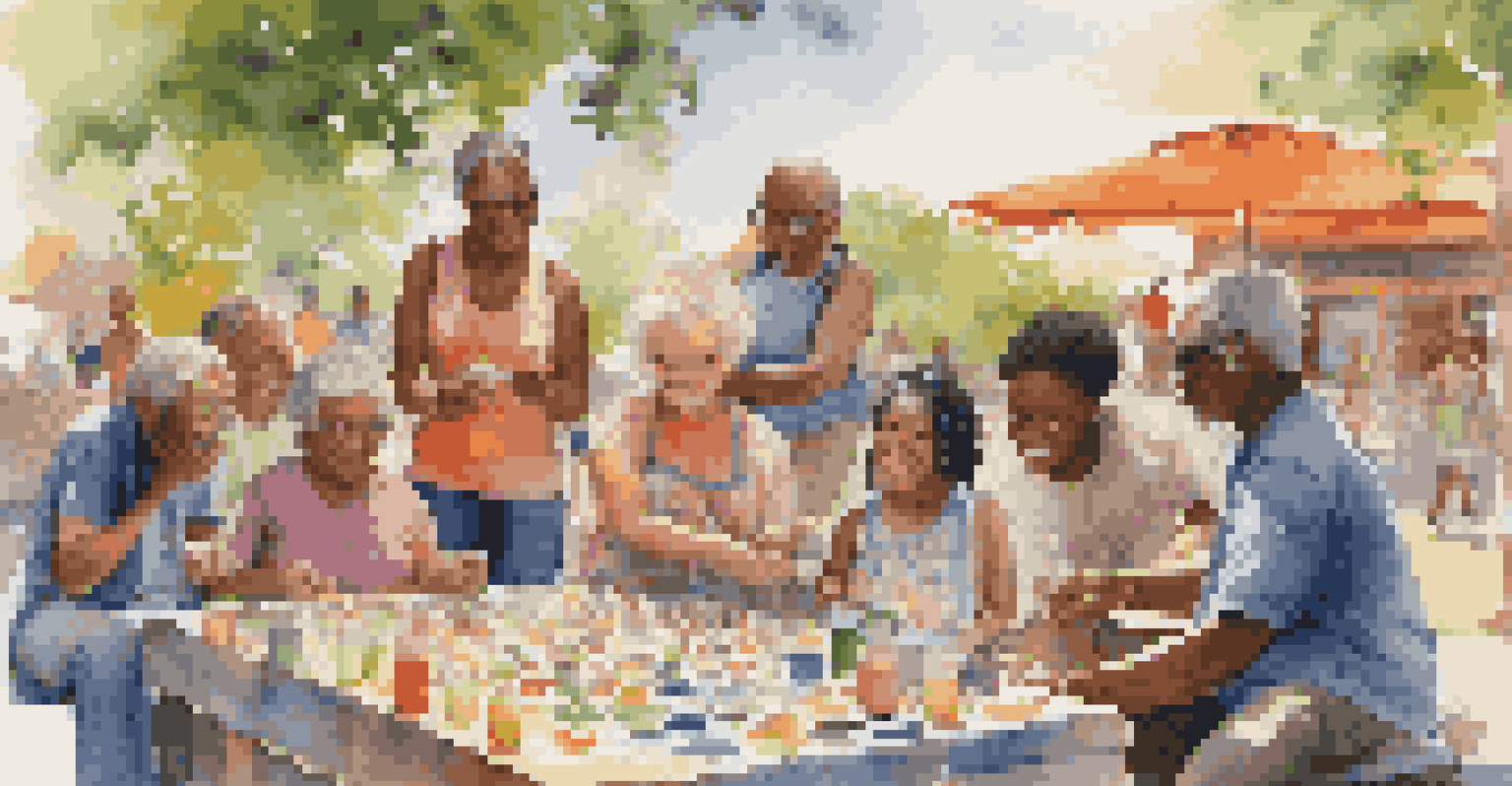Famous Artists' Perspectives on Aging and Creativity

The Beauty of Aging: Embracing Change in Art
Aging can be a daunting concept for many, but for artists, it often represents a rich tapestry of experiences that enrich their work. Renowned painter Georgia O'Keeffe once said, 'I have to see a thing before I can paint it.' As she aged, her perspective on life deepened, allowing her to create art that spoke to the essence of nature in profound ways. Through her lens, aging became a celebration of life's cycles rather than a decline.
I have to see a thing before I can paint it.
Similarly, the sculptor Louise Bourgeois embraced the changes that came with age, using them as fuel for her creativity. Bourgeois famously stated, 'I am not what I am, I am what I do with my hands.' This perspective illustrates how aging can ignite a new sense of purpose, pushing artists to explore themes of memory, loss, and resilience in their work. It’s like fine wine; the longer you let it breathe, the more complex the flavors become.
Embracing aging as a natural progression rather than a setback allows artists to tap into deeper emotions, creating pieces that resonate with audiences on a more intimate level. By reframing aging as a source of inspiration, artists can transform the narrative around growing older, showcasing that creativity is not stifled by age but rather enriched by it.
Wisdom and Experience: The Artist's Edge
As artists grow older, they accumulate a wealth of life experiences that can profoundly influence their work. Take the legendary Pablo Picasso, who claimed, 'It takes a long time to become young.' His later works, marked by bold colors and abstract forms, reflect a newfound freedom in expression, demonstrating that with age comes not just wisdom but also a refreshing perspective on creativity.

This accumulation of experiences allows artists like Picasso to tackle complex themes with a nuanced understanding. They can draw from their past, infusing their art with layers of meaning that younger artists might still be discovering. It’s akin to a storyteller who has lived through numerous tales, now weaving them into a larger narrative that captivates and resonates.
Aging Enhances Artistic Perspective
As artists age, their experiences deepen their creativity, allowing them to tackle complex themes with greater emotional resonance.
Moreover, the confidence that often accompanies aging can lead to bolder artistic choices. Artists feel less pressured to conform to trends, allowing them to pursue their true vision. This blend of wisdom and freedom can result in groundbreaking work that challenges conventions and inspires new generations.
The Influence of Physical Limitations on Creativity
While aging can bring wisdom, it may also introduce physical limitations that challenge an artist’s creative process. For instance, the painter Henri Matisse, who faced significant health issues later in life, adapted his technique to continue creating. He transitioned from painting on canvas to using cut paper, demonstrating that constraints can lead to innovative solutions. This transformation showcases the resilience of the creative spirit.
It takes a long time to become young.
Artists often find ways to work around or embrace their limitations, creating unique styles that reflect their journeys. The photographer Imogen Cunningham, who continued to work into her nineties, remarked, 'Which of my photographs is my favorite? The one I’m going to take tomorrow.' This attitude reflects a determination to adapt and evolve, reminding us that creativity knows no age.
In this light, physical limitations can serve as a catalyst for creativity rather than a barrier. By finding new methods and exploring different mediums, aging artists can continue to express themselves powerfully, proving that creativity is a lifelong journey.
Aging as a Source of Inspiration for Storytelling
Many famous artists view aging as a rich source of inspiration for storytelling in their work. The writer and artist Kiki Smith captures the essence of life cycles in her pieces, often reflecting on themes of aging, mortality, and renewal. Her work invites viewers to confront their own experiences with time, demonstrating how personal narratives can find their way into creative expression.
Similarly, the painter Yayoi Kusama uses her experiences with aging and mental health to fuel her artistic creations. Her distinctive polka dots and immersive installations speak to her journey through life, allowing her to share her perspective on existence and identity. This connection between aging and storytelling adds depth to art, creating a bridge between the artist's life and the viewer’s experience.
Community Supports Aging Artists
Support networks and intergenerational collaborations empower aging artists, fostering a vibrant artistic ecosystem.
Through these narratives, aging artists can foster connections with their audience, inviting them to reflect on their own journeys. This shared experience enriches the art world, proving that creativity is a powerful tool for understanding and interpreting the complexities of life.
The Role of Community in Supporting Aging Artists
As artists age, the importance of community and support networks becomes increasingly evident. Organizations like the Artist Pension Trust provide resources and encouragement for artists as they navigate the later stages of their careers. By fostering a sense of belonging, these communities empower aging artists to continue creating and sharing their work with the world.
Moreover, intergenerational collaborations can be incredibly enriching, allowing younger artists to learn from their elders while also bringing fresh perspectives into the mix. This exchange of ideas creates a vibrant artistic ecosystem where creativity thrives at all ages. It’s much like a garden, where different plants contribute to a thriving environment.
In this supportive atmosphere, aging artists can feel valued and inspired, knowing their contributions are appreciated. This sense of community not only helps them continue their artistic journeys but also ensures that their voices and stories remain an integral part of the cultural landscape.
Cultural Perspectives: Aging and Creativity Across the Globe
Different cultures have varying attitudes toward aging and creativity, influencing how artists perceive their later years. In many Eastern cultures, for instance, aging is often viewed as a time of wisdom and respect. This cultural reverence for the elderly can inspire artists to embrace their age as a badge of honor, allowing them to create work that reflects their rich life experiences.
Conversely, in some Western societies, aging can be stigmatized, leading to the perception that creativity diminishes with age. However, artists like the iconic Joan Didion challenge this notion, proving that profound insights can emerge at any stage of life. Her poignant writings demonstrate that aging can enhance clarity and depth in storytelling, fostering a stronger connection with audiences.
Cultural Views Shape Aging Perception
Different cultures influence how aging is perceived, affecting artists' approaches to creativity and self-expression.
These cultural perspectives highlight the importance of recognizing and valuing the contributions of older artists. By understanding the diverse ways aging is viewed around the world, we can cultivate a more inclusive artistic community that celebrates creativity at every age.
Conclusion: Creativity as a Lifelong Journey
In conclusion, the perspectives of famous artists on aging reveal a profound truth: creativity is not confined by age but rather flourishes with the wisdom and experiences that come with it. From embracing change to finding new ways to express themselves, aging artists continue to inspire and challenge the boundaries of their art forms.
As we reflect on their journeys, it becomes clear that aging offers unique opportunities for growth and exploration. By fostering a culture that values the contributions of artists at every age, we can ensure that creativity remains a vibrant and dynamic force throughout our lives.

Ultimately, the stories and insights of these artists remind us that aging is not an end but a beautiful continuation of the creative journey. Let us celebrate creativity in all its forms and recognize the invaluable role that aging artists play in shaping the cultural landscape.